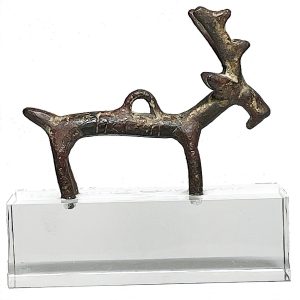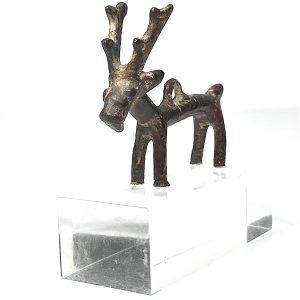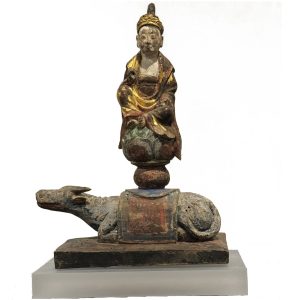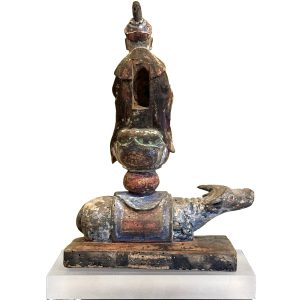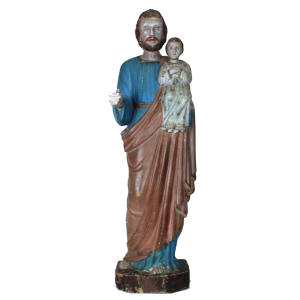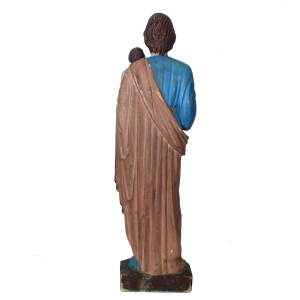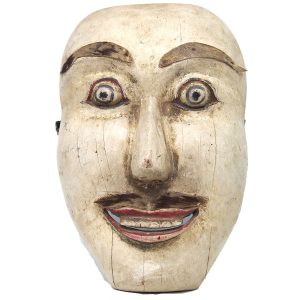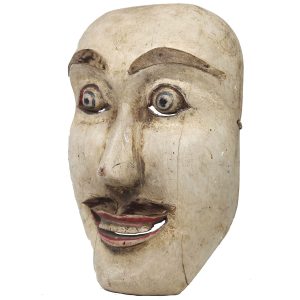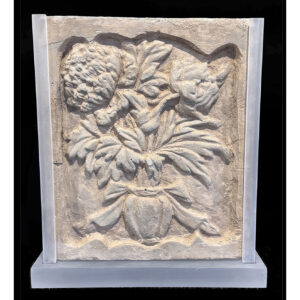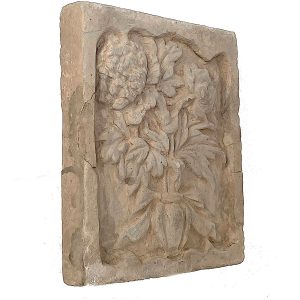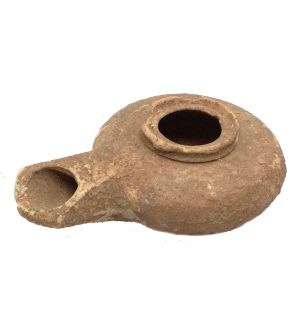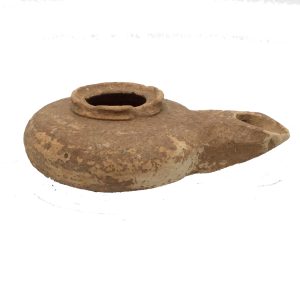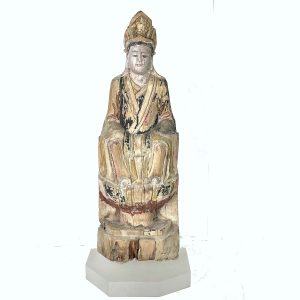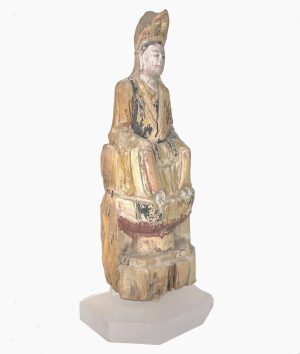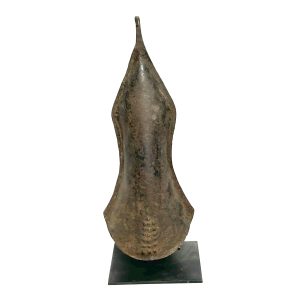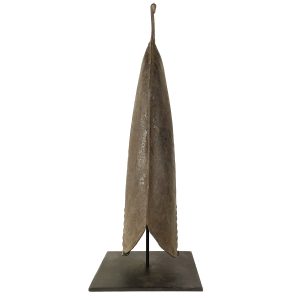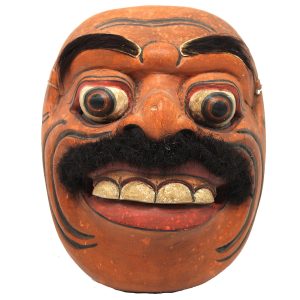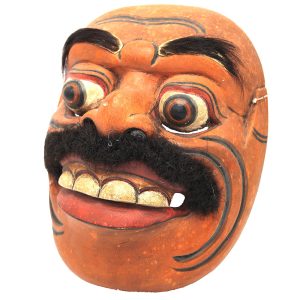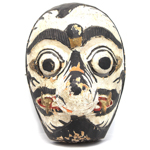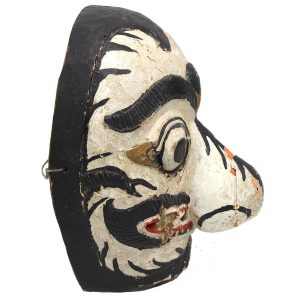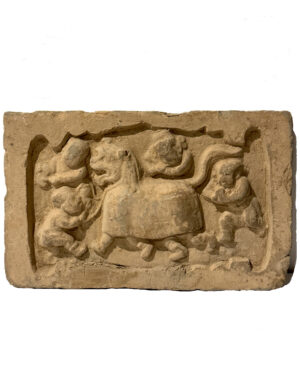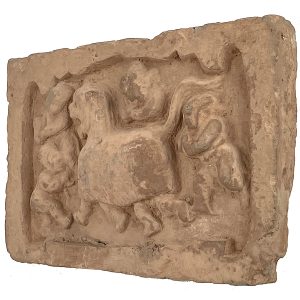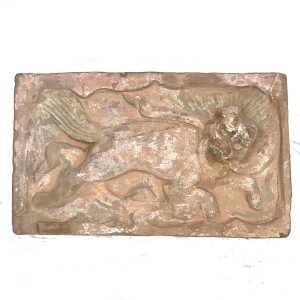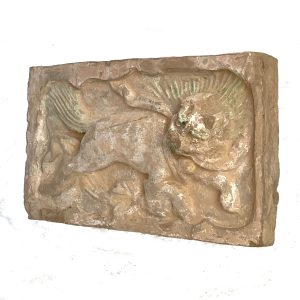Showing 61–72 of 99 results
-


$450.00
H: 3″ W: 3.125″ D: 1.25″ | FREE SHIPPING WITHIN CONTINENTAL U.S.
Luristan nomads made sophisticated and imaginative bronzes prized in the ancient world for their inventive designs and fine craftsmanship. This Iron Age finely cast figurine depicting a long horned goat, a major source of food for survival has a detailed head with long antlers, tall thin legs, large eyes and a slightly curved body and is mounted on a Lucite base.
-


$885.00
H: 10.25″ W: 7.5″ D: 3.75″ | FREE SHIPPING WITHIN CONTINENTAL U.S.!
This extraordinary rare and delicately rendered rural carving is a female bodhisattva possibly Guanyin seated on a lotus throne atop an ox. Beautifully highlighted in vibrant gold and adorned with intricate designs on the lotus petals and ox’s saddle coverings, this statue shows how the concept of a bodhisattva was adapted to the deification of “draft animals” (beasts of burden) who were integral to rural daily and agricultural activities in Chinese Popular Religion, Buddhism and Taoism beliefs.
-


$4,800.00
This special and important carving of Joseph with the Christ child from Kerala reflects a blend of Portuguese and European traditions with the indigenous traditions of South India. Christian missionaries built churches in Kerala from 1510 (St. Francis Church in Kochi) through the18th century and brought with them European carvings, paintings, and other large and…
-


$395.00
Balinese carvings and masks are ethnic folk art and a blend of Hinduism and its initial animism. Most masks made in Bali are from pulai wood that rarely cracks and is easier to carve. As it is not native to Lombok, carvers there use a variety of woods some of which were dense with others light….
-


$995.00
H: 11” W: 9.5” D: 1.65” | FREE SHIPPING
This earthenware brick tile bordered with a deep scalloped frame depicts a vase with a bouquet of propitious flowers: a chrysanthemum and a peony wrapped with an elegant ribbon. Tiles like this were made to decorate the large numbers of buildings created during the prosperous Song dynasty and to adorn tombs. This elegant brick is in good condition for its age with expected chips and cracks, some restoration of background and a re-glued frame break on each side. It has earth adherents from its burial in a tomb.
-


$155.00
Although most famous for Christian burials, people of all religions were interred in the catacombs due to a shortage of land and demand for burial space after a switch from cremations to underground burials in the 2nd century A.D. Roman made closed earthenware terracotta lamps became the dominant oil lamp style in the Roman world…
-


$1,375.00
SOLD | H: 23.25″ W: 9.25″ D: 6.5″
This Queen Mother of the West, the highest ranking female Taoist deity was probably displayed as a pair along a statue of Guanyin, the most significant Buddhism female (Guanyin on a Lotus Pedestal (16206B) highlighting the importance and similarity of these revered female images Like the Guanyin, the Queen Mother’s delicately carved face has half closed eyes, serene composure mouth with a hint of a smile, which is more Buddhist than Taoist. Her headdress, centered by her iconic phoenix, rests under a hood extending to her shoulders and back. She wears a high collared three-layered Taoist robe, her hands covered by a ritual cloth.
-


$395.00
H: 21″ W: 8″ D: 4.75″ | FOR SHIPPING INFORMATION CONTACT US AT 213-568-3030
This traditional African hammered iron gong is elegantly shaped like a flaring bell. Heat riveted, a forging process joining two metal pieces together, it was made by Congolese tribal people. Made with 5 parallel lines of 5 decorative round bulges on both sides, it was often held using a raffia handle and beaten using sticks covered with rubber at its end. Originally a ritual instrument, they were also beaten to call members of special restricted societies to meetings and were a symbol of wealth, prestige, and influence.
-
Sale!


$110.00 Original price was: $110.00.$0.00Current price is: $0.00.
H: 7.625″ W: 6.125″ D: 3.375″ | FREE SHIPPING within continental u.s.!
Most jauk keras (strong, scary) masks of a giant are often red or orange to reinforce a volatile dance with jerky movements. This jauk manis (good, sweet) mask dance is a more controlled, regulated and enacted with more calm and human movements. Personally collected in Bali in the 1970s, it is in excellent condition with expected minor scratches and paint losses.
-


$165.00
Influenced by Islam for centuries, Javanese theater in Indonesia is stylized, didactic and full of central characters said to be cultural and historic icons of morality. Mask drama theater (Topeng Wayang) in Java is dominated by the conservative central Javanese palace courts (kraton) of Surakarta, Solo and Jogjakarta (Yogyakarta) which have long supported mask makers,…
-
Sale!


$495.00 Original price was: $495.00.$395.00Current price is: $395.00.
H: 7.25 ” W: 11.5″ D: 1.75 ” | FREE SHIPPING WITHIN CONTINENTAL U.S.!
Song brick tiles like this decorated government, public and religious buildings, often depicting mythical animals, auspicious objects and holiday celebrations. This tile shows a traditional lion dance performed at Chinese New Year to attract prosperity and good luck for the coming year.The lion is flanked by 2 frightened children and a person in anjali mudra, symbolizing composure that could counter balance the children’s fear.
-


$485.00
The Song dynasty (960–1279) is considered the most culturally brilliant era in later imperial Chinese history. A massive expansion during this dynasty produced government, public and religious buildings and tombs with walls decorated with earthenware unglazed mold-made brick tiles. Some were purely decorative and others were wishes for happiness and comfort in the deceased’s afterlife…
End of content
End of content

